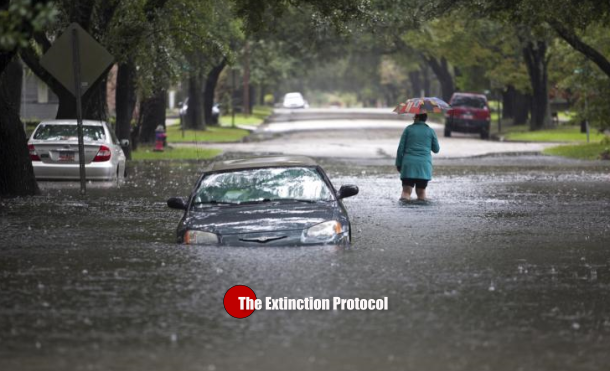Historic, 1,000-year flood ‘like nothing South Carolina has ever seen

October 2015 – SOUTH CAROLINA – South Carolina’s record-smashing days of rain created a 1,000-year flood event that scientists may be studying for years, caused by a confluence of weather events. Some parts of the Charleston area received twice as much rain as Hurricane Hugo dropped in 1989, though mercifully without hurricane winds or a storm surge. Tropical moisture from Hurricane Joaquin and a second storm system was squeezed by two conflicting weather systems “into a narrow band of intense rainfall” funneled directly at South Carolina, according to AccuWeather. “I have never seen rainfall this intense, in this large of an area and during this short of a period in absence of direct impact from a tropical storm or hurricane,” said AccuWeather Chief Meteorologist Elliot Abrams. The storms resulted in what’s known as a 1,000-year flood, but scientists caution that doesn’t mean such flooding won’t be seen again during our lifetimes.
“You can, in theory, have a 1,000-year flood the very next day,” said Brenda Ekwurzel, senior climate scientist at the Union of Concerned Scientists. In a 100-year flood zone, there’s a 1 percent chance of flooding each year, and homeowners are typically required to have flood insurance. In a 1,000-year flood area, there’s a one-tenth of 1 percent yearly chance of flooding, but that doesn’t mean there will be 1,000 years between floods. “We certainly don’t have precipitation records going back 1,000 years,” said meteorologist Emily Timte of the National Weather Service, Charleston. The last rain event that comes close was in June 1973, when an unnamed tropical system dumped 16.56 inches on the Charleston area over four days.
During the first four days of this month, some parts of the Charleston area reported more than 2 feet of rain, and the 17.29 inches recorded at Charleston International Airport was enough to break all the records. “We beat the greatest one-day, two-day, three-day and four-day rainfalls,” Timte said. The heavy rains came during a time of unusually high tides, and with soil already saturated by heavy rain in late September. As a result, rainfall was less able to either soak into the ground or flow into the sea. In downtown Charleston, the harbor lapped over the seawall at The Battery, water came up through storm drains and the entire peninsula was closed to non-resident vehicles on Saturday.
Some neighborhoods in North Charleston and in suburban and rural areas were flooded so badly that residents were evacuated by emergency crews, in one case by helicopter. Upstate, streams became angry rivers, washing away roads and vehicles. Eleven deaths were reported in South Carolina and two in North Carolina, including at least seven drowning victims. “This was historic,” Ekwurzel said. “People will be studying this one.

No comments:
Post a Comment